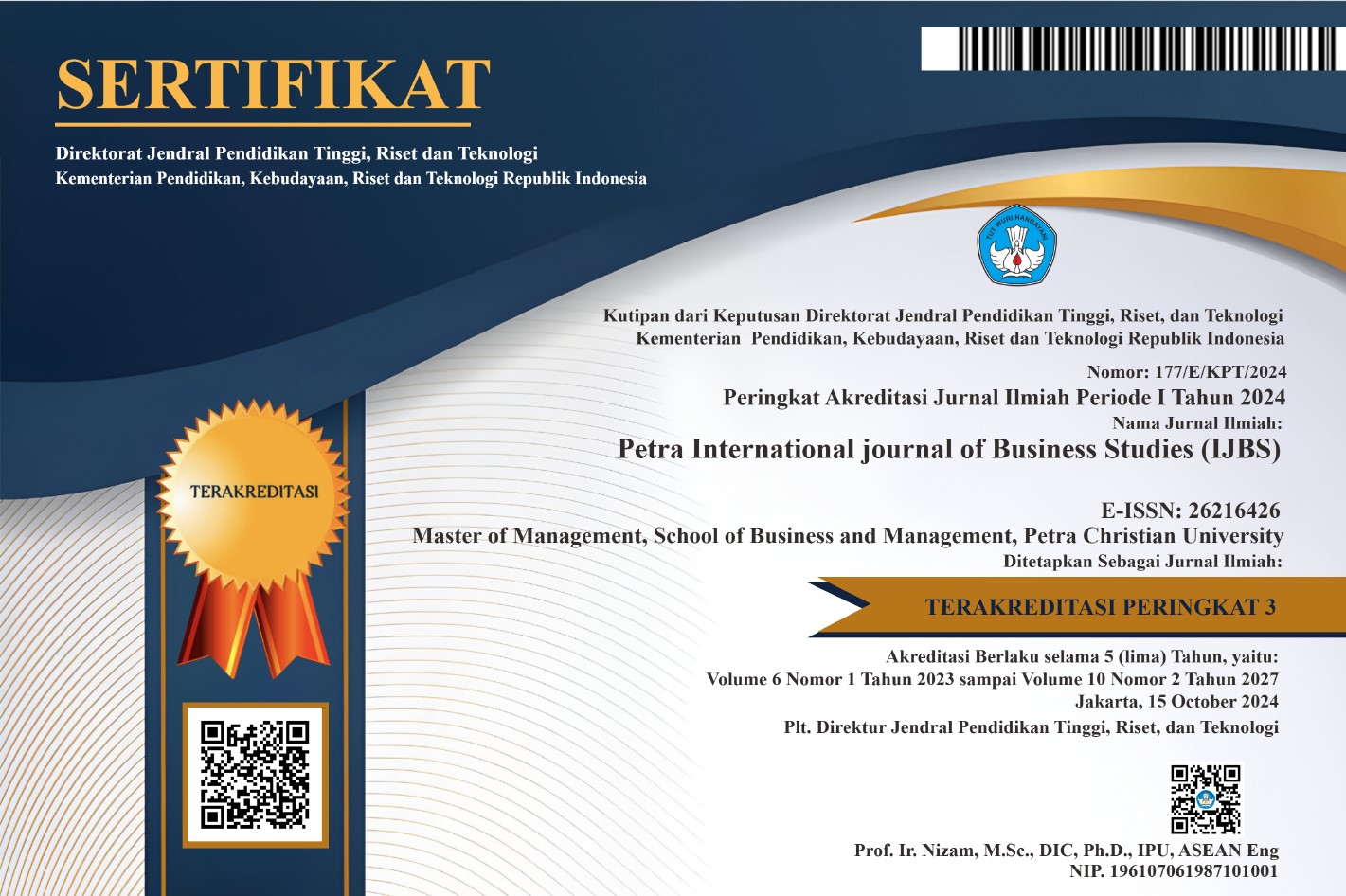The Effect of Promotion on Financial Literacy in Increasing Buying Interest in Government Bonds
DOI:
https://doi.org/10.9744/ijbs.3.2.94-97Keywords:
Promotion, Financial Literacy, Buying Interest, Government Bonds.Abstract
The economic development of a country as a whole can be seen from the equitable distribution of national development. To support development activities, funds are needed. The kind of funds needed is sustainable development funds to maintaineconomic development. Government Bonds (Surat UtangNegara/ SUN) are seen by the government as an alternative instrument for financing the State Budget, covering short-term cash shortages and managing the country's debt portfolio. This study aims to examine the Effect of Promotion and Financial Literacy on Buying Interest in Government Bonds (SUN). It used a descriptive survey and explanatory survey methods. The primary data collection method was obtained directly from thesource with a sample size of 100 students of Maranatha Christian University and Parahyangan University who have known about promotion and financial literacy. The distribution of the questionnaire was carried out using a non-probability sampling technique, namely purposive sampling. For data analysis, multiple linear regression statistical tool was used with a significance level of 5% for t-test and F-test. The results of this study indicate that both the partial and simultaneous tests show that promotion and financial literacy variables affect interest in the Buying Interest.
Downloads
References
Adler H. Marunug dan Lutfi T. Rizky (2009), Succesful Financial Planner: A Complete Guide, Jakarta: Grasindo
Alma, Buchari, 2012. Manajemen Pemasarandan Pemasaran Jasa. Bandung: Alfabeta.
Assael, Henry. 2004. Consumer Behavior. Edisi Bahasa Indonesia. New Jersey: Prentice-Hall Inc
Australian Bonds and Investment Commission. Diak-sestanggal 15 Desember 2019 dari, https://asic. gov.au/
Chen, H. & Volpe, R. P. 1998. An Analysis of Personal Financial Literacy Among College Student. Financial service review 7(2): 107-128.
Ferdinand, 2009. Manajemen Pemasaran. Edisi Per-tama. Jilid 1. Jakarta: Erlangga.
Financial Literacy Around the World. dari, https://gflec. org/wp-content/uploads/2015/11/Finlit_paper_ 16_F2_singles.pdf.
Garman, E. Thomas danForgue, Raymond E., 2010. Personal Finance 11th Edition. United States of America: Cengage Learning, Inc.
Kiyosaki., T Robert. 2008. Increase Your Financial IQ: Get Smarter with Your Money. Boston: Business Plus
Kotler dan Keller. 2016. Manajemen Pemasaran. Jakarta: Erlangga.
Kotler, Philip and Grey Amstrong. (2016). Prinsip-prinsip Pemasaran. Edisi 13. Jilid 1. Jakarta: Erlangga.
Kotler, Philip and Kevin Lane Keller. 2016. Marketing Management, 15th Edition, Pearson Education,Inc.
Lusardi, A dan Mitchell, O. (2007). Financial Literacy and Retirement Planning: New Evidence from the Rand American Life Panel, MRRC Working Paper 157.
Nababan, D., Sadalia, I. (2012). AnalisisPersonal Financial Literacy dan Financial Behaviour Mahasiswa Strata I Fakultas Ekonomi Universitas Sumatera Utara. Jurnal Media Informasi Manajemen, Vol.1, No. 1:01-16.
OtoritasJasaKeuangan. 2013. Strategi Nasional Literasi Keuangan Indonesia.Desember 2019 dari, www.ojk.go.id.
Otoritas Jasa Keuangan. 2014. dari, www.ojk.go.id.
Otoritas Jasa Keuangan. 2019. Siaran PersSurvei OJK 2019 Indeks Literasi Dan Inklusi Keuangan Meningkat. dari, https://www.ojk.go.id/id/berita-dan-kegiatan/siaran-pers/Pages/Siaran-Pers-Survei-OJK-2019-Indeks-Literasi-Dan-Inklusi-Keuangan-Meningkat.aspx
Priyanto. 2010. Teknik Mudah dan Cepat Melakukan Analisis Data Penelitian Dengan SPSS. Yogyakarta. Gava Media.
Schiffman dan Kanuk. 2014. Perilaku Konsumen. Jakarta: Indeks.
Sugiyono, 2013, Metodologi Penelitian Kuantitatif, Kualitatif Dan R&D. Bandung: ALFABETA.
Additional Files
Published
Issue
Section
License
Petra IJBS (e-ISSN: 2621-6426) is published by Master of Management program, School of Business and Management, Petra Christian University, Indonesia (MM SBM PCU).












